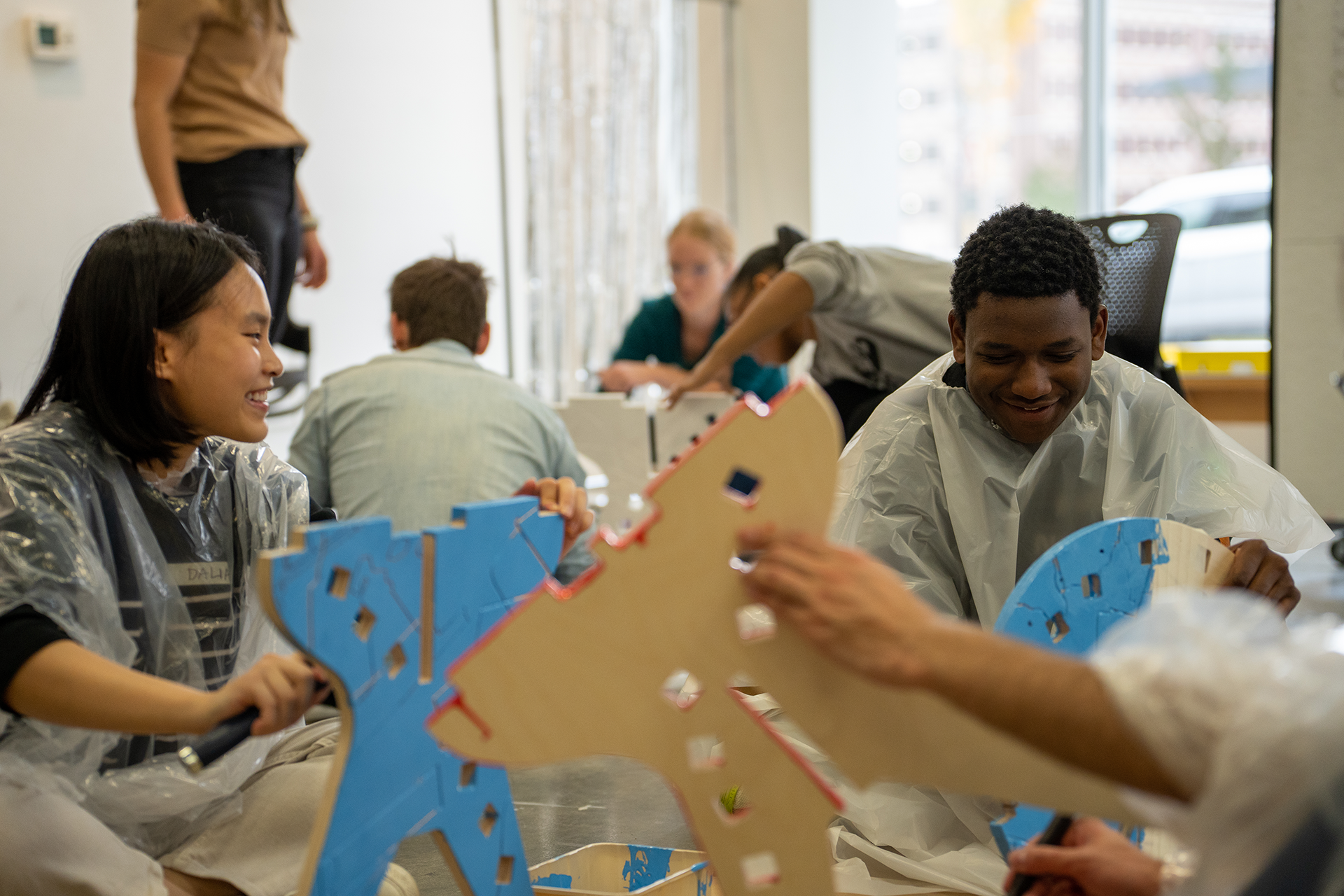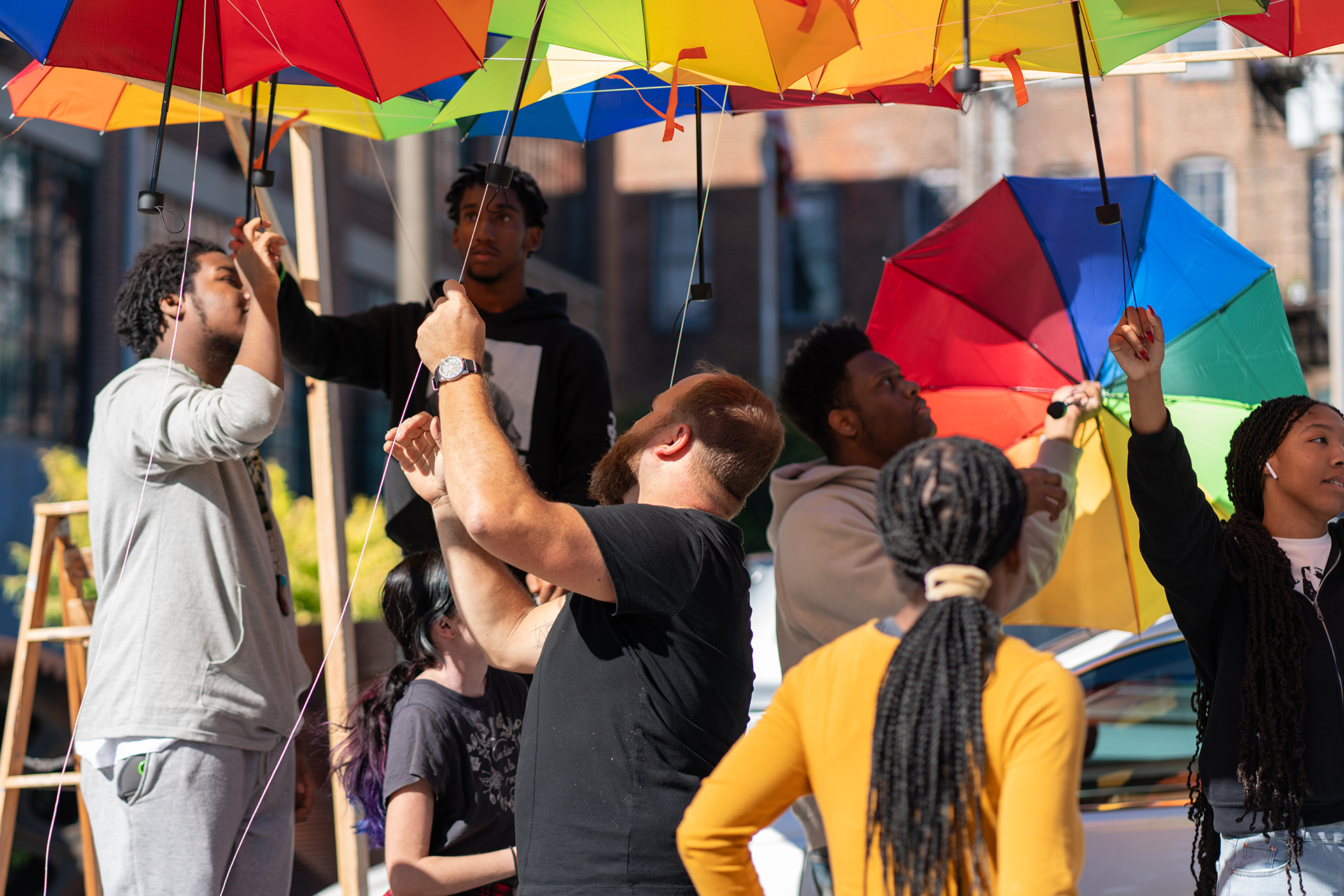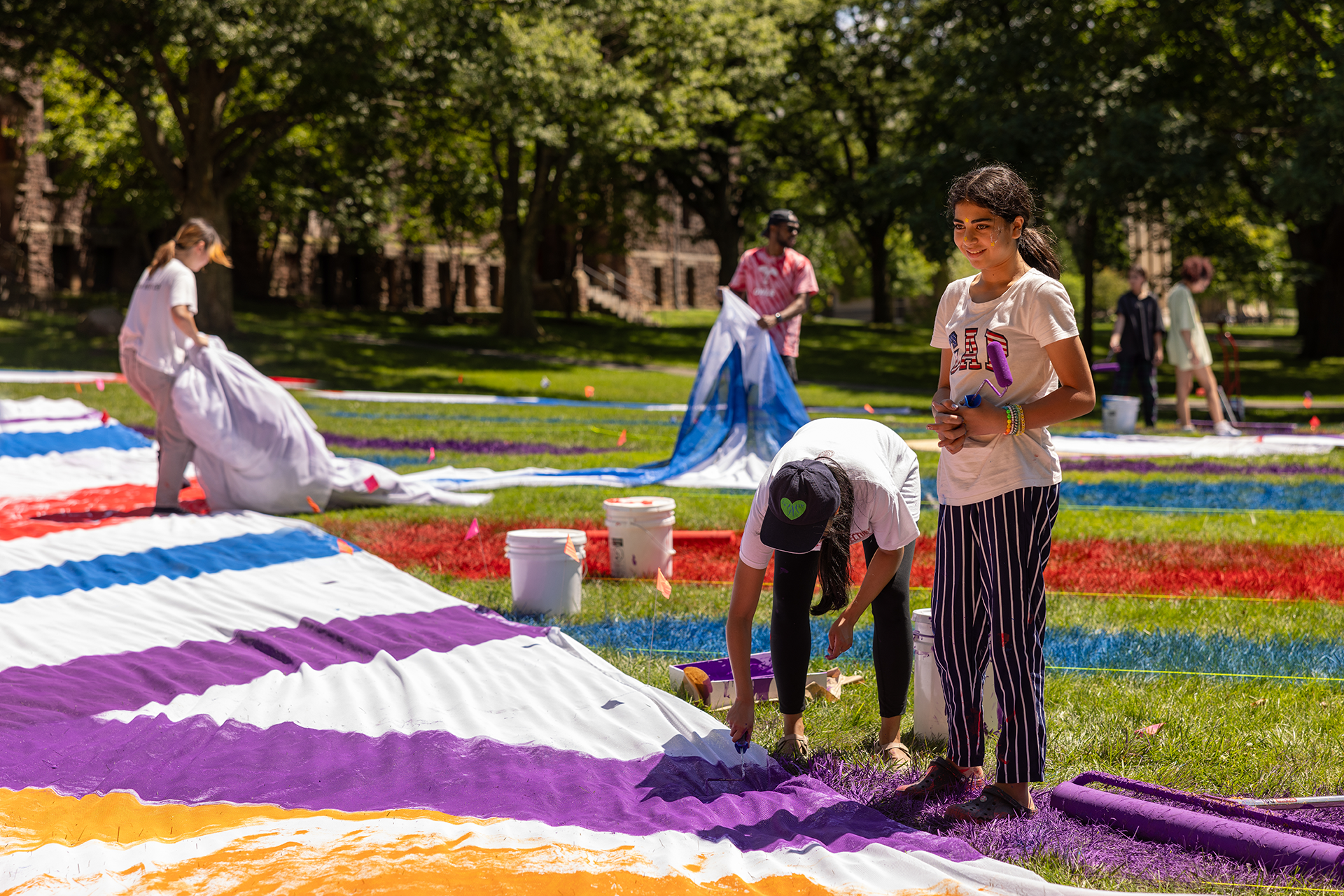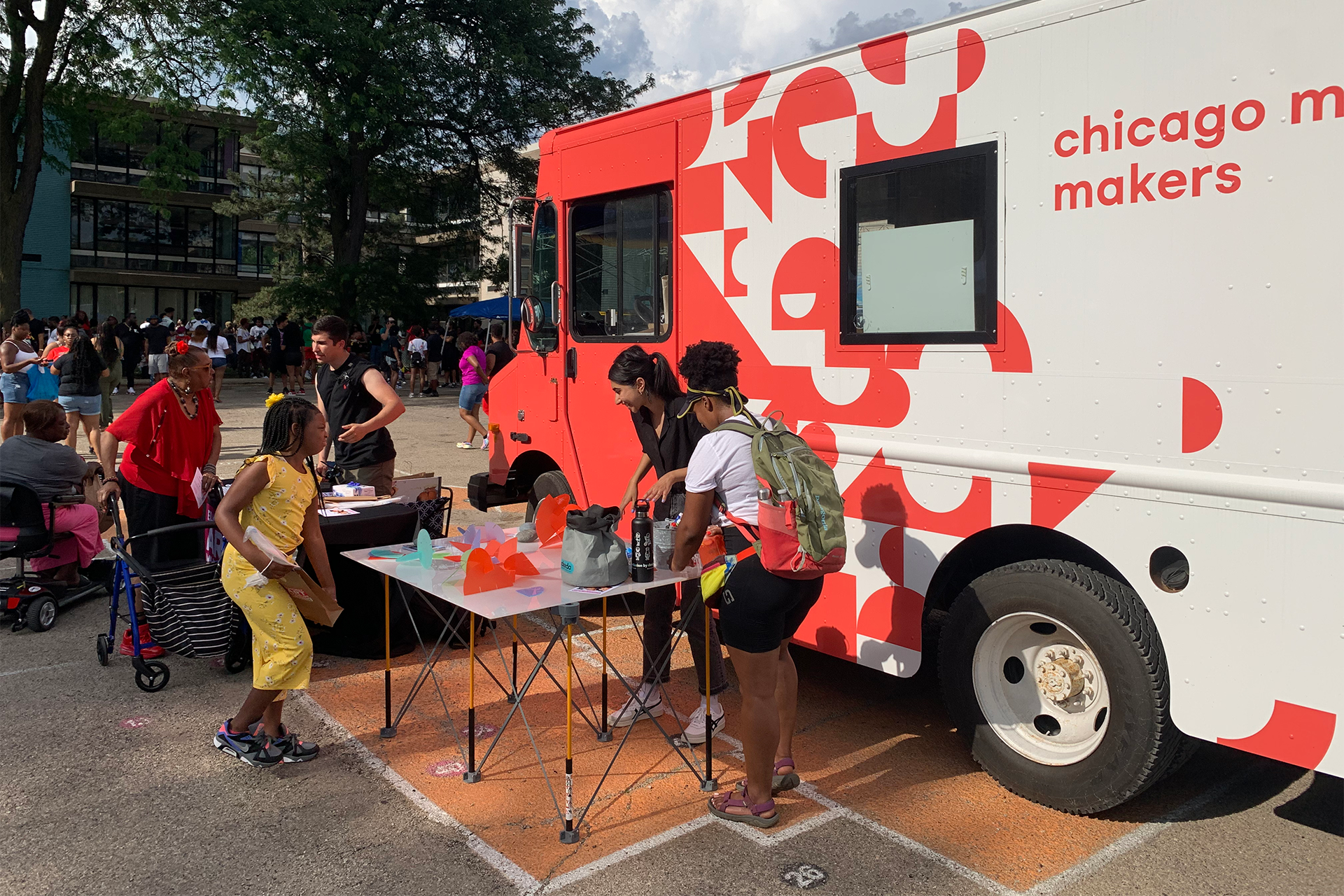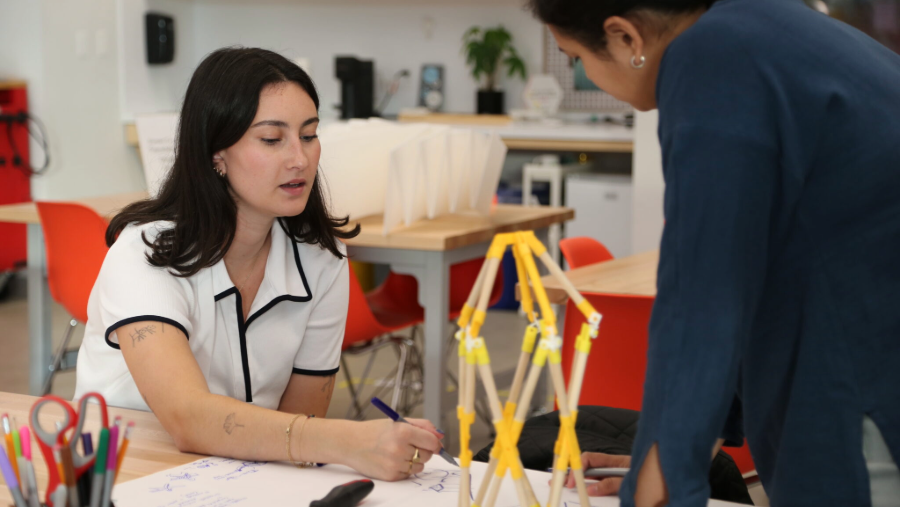If design educators are truly seeking to transform who participates in the field, what disruptions and adjustments might most positively impact how students are invited into the design disciplines, guided and instructed throughout their education, and prepared for professional practice?
Through her research and teaching, these are questions at the forefront of Architecture Assistant Professor Suzanne Lettieri’s work and the topic she brings before the College of Architecture, Art, and Planning community with “Junior Architects: Building Disciplinary Transformation Through Education,” this semester’s Preston H. Thomas Memorial Symposium on October 20.
The Challenge
For Lettieri, it is important to take these discussions beyond the theoretical and connect them directly with active work on the ground, especially in the aftermath of the transformative events of 2020 and, more recently, the Supreme Court decision on affirmative action in admissions and what that may signal to minoritized students. “Across the board in architecture programs, there’s been this demand for educational reform and this commitment to enhance diversity and inclusivity. For me, the symposium is about really talking about what it takes to stand behind those words.”
Across the board in architecture programs, there’s been this demand for educational reform and this commitment to enhance diversity and inclusivity. For me, the symposium is about really talking about what it takes to stand behind those words.
Architecture Assistant Professor Suzanne Lettieri
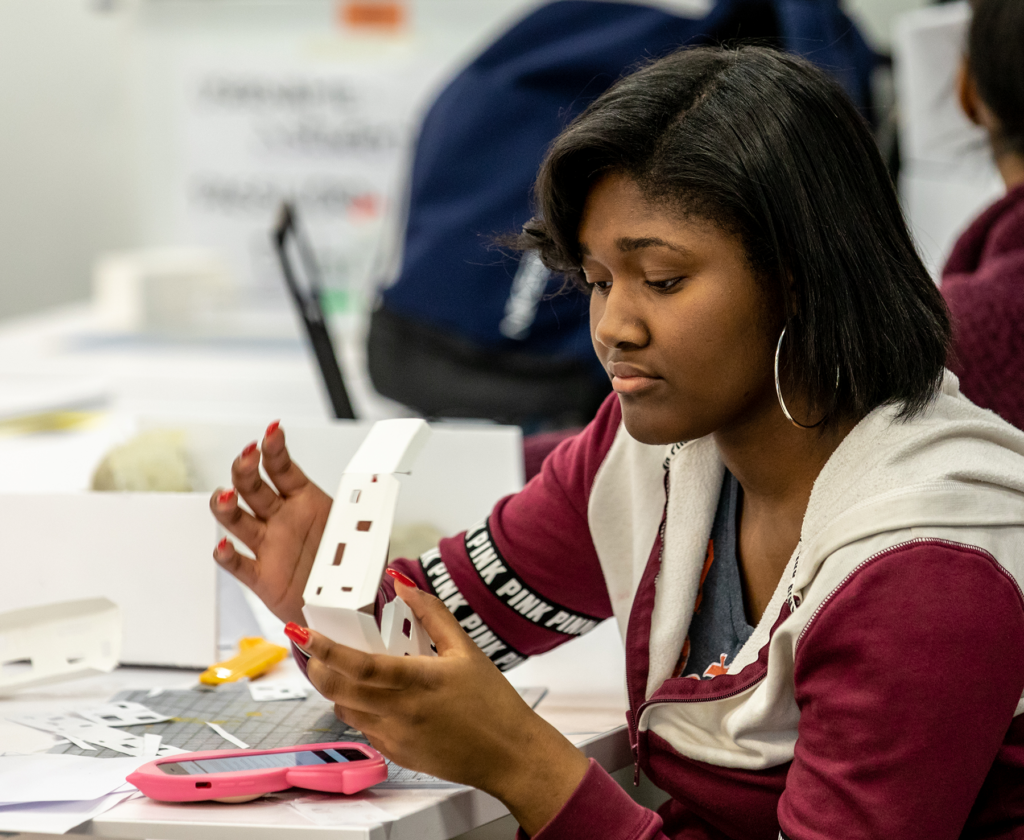
The Evidence
To foster these conversations around the obstacles and opportunities involved in reshaping architectural education, Lettieri has organized, with coordination by Design Teaching Fellow Imani Day, a series of presentations and panel discussions pinned to key moments in a student’s trajectory. The day will begin with Building Society, a big-picture look at the state of public schooling in the U.S. and the disparities in student experience prior to pursuing higher education. Pedagogy & Pluralism will then confront academic elitism and the inherent difficulties in enacting meaningful change in institutional environments. To conclude, Civic Professionalism will explore the alternative career trajectories emerging from architectural education and how fostering a more culturally engaged and influential practice can reshape the discipline. During each session, academic presentations will be presented side-by-side with brief videos showcasing educators and students currently participating in pre-college enrichment programs in the U.S. Moderated discussion across these perspectives will conclude each panel.
A central focus of Lettieri’s inquiry delves into the advantages pathway programs offer and what inherent problems they identify.
“The fact that these pathway programs have to exist means that we are not fully addressing the systemic issues in our country,” Lettieri says, acknowledging the embedded biases in the ways students are often taught. Still, this extracurricular work is worth examining and celebrating, as it may offer valuable insight into how to make further, high-impact improvements to transform the design disciplines. “How is it that these pathway programs actually could allow us to reinvent the ways we think about design teaching and learning in higher education?” she prompts. “There’s no one right way to do it, so it’s important to shed light on the various ways that people are committed to this work and the amount of labor and love, honestly, that has to go into making any of these programs sustainable.”
A companion exhibition in Milstein Hall Dome will offer a comprehensive survey of approximately 25 such enrichment programs spanning the nation, showcasing their approach and impact.
Bringing symposium activity to a close, Sharon Egretta Sutton, Distinguished Visiting Professor of Architecture at Parsons School of Design, will deliver a keynote reflecting on the day’s shared perspectives and offering her own takeaways, drawn from her heralded career dedicated to fostering inclusive design disciplines and developing the tools and environments to bring them to fruition.
The Takeaway
The symposium’s multistage approach to exploring diversity and inclusion in design education offers the chance to closely examine the opportunities inherent in each, from attracting the broadest array of candidates to the field to making sure students fully benefit from their experience within the university and then are able to find meaningful professional paths after graduation. The day will be both a celebration of those leading the way and a reminder of how much further institutions have to go.
The exciting cross-section of included viewpoints provides a more expansive look at current teaching methods and the different ways they value expertise and lived experiences. “There’s not going to be just one way to approach this,” Lettieri emphasizes. “It’s really a tremendous challenge, but one that offers opportunities to find empowering synergies between early-learning initiatives, communities, and higher education.”
